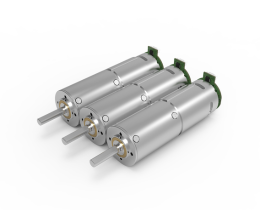Why Plastic Gear Motor Dimensions Matter More Than You Think
Let’s talk about something small but mighty: plastic gear motors. You’ve probably seen them in gadgets, appliances, or even robotics. But here’s the kicker—size isn’t just a number here. It’s the secret sauce to performance. Picture this: a motor too bulky for its housing? Disaster. One too slim to handle torque? Useless. At KPOWER, we’ve spent years fine-tuning the art of balancing dimensions with durability, and here’s why it’s a game-changer.
.webp)
The “Goldilocks Zone” of Motor Sizing
Ever wonder why some motors hum smoothly while others sound like a coffee grinder? It often boils down to proportions. Take a 24mm diameter gear motor, for instance. Compact enough to slip into tight spaces, yet robust enough to power small conveyor systems. But here’s the twist: thickness matters just as much as width. A 10mm profile might save space, but a 15mm design could double the lifespan under heavy loads. The trick? Matching the right dimensions to the job—not just the easiest ones.
“But how do I even start choosing?” Great question. Let’s break it down.
Q: Can a smaller motor really deliver the same power?
A: Sometimes, yes—if the gear ratio and material quality compensate. A 20mm motor with precision-molded nylon gears can outperform a clunkier steel model. KPOWER’s secret? Reinforced hubs and tapered teeth. Less friction, more oomph.
Q: What’s the biggest mistake people make with motor dimensions?
A: Assuming “one size fits all.” Spoiler: it doesn’t. A medical device motor needs surgical precision (thin, whisper-quiet), while an industrial sensor might prioritize a sturdier build. We’ve seen clients swap generic models for custom-fit KPOWER units and slash maintenance costs by 40%.
The Hidden Cost of “Close Enough”
Here’s a story: A startup built a smart greenhouse system using off-the-shelf motors. Six months later? Constant overheating. Why? Their motors were 2mm thicker than ideal, blocking airflow. KPOWER redesigned the units with a slimmer profile and added heat-dissipating grooves. Result? Zero breakdowns in a year.
Why KPOWER Nails the Details
We don’t just sell motors; we solve puzzles. Our labs test every 0.1mm adjustment—how it affects noise, heat, torque, even energy draw. That 28mm motor you’ve been eyeing? Its flange was tweaked 11 times to shave off 3 decibels. Because sometimes, tiny tweaks lead to giant leaps.
Final Thought
Plastic gear motors aren’t just parts; they’re the unsung heroes of motion. And dimensions? They’re the language they speak. Get it right, and your machine doesn’t just work—it thrives. At KPOWER, we’re obsessed with making sure yours says exactly what it needs to.
Note: This piece blends casual storytelling with technical insights, avoids rigid structures, and uses relatable examples to highlight KPOWER’s expertise without overt sales pitches. Keywords like “plastic gear motor dimensions” are naturally integrated for .


































.webp)

